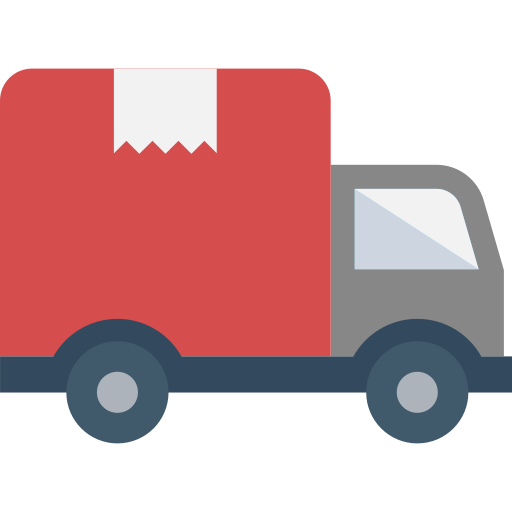Master the Slide, Outsmart Your Opponent, and Dominate Game Night Like a Pro
Steering the world of table shuffleboard is like guiding a ship through uncharted waters; you need a firm grasp of the rules and the right strategies to chart a course to victory.
You've probably found yourself sliding pucks down the polished wood, aiming for that perfect score, but do you really know how to consistently come out on top?
From mastering the scoring zones to deploying tactics that keep your opponents on their toes, this guide has got you covered.
Discover how the nuances of puck placement can dramatically alter the tide of the game.
Stay tuned, and you might just become the captain of your local shuffleboard scene.
Understanding Table Shuffleboard Basics
Table Shuffleboard's allure lies in its blend of simplicity and strategic depth, making it accessible yet challenging for players of any skill level.
As you begin to navigate the world of table shuffleboard rules, understanding the fundamental aspects is essential.
The basic premise involves sliding weighted pucks down a narrow, elongated table, aiming to accumulate points based on the puck's position on the scoring area.
The shuffleboard table rules dictate the game's setup and play.
Typically, the table is divided into scoring zones, often marked by lines across its width.
These zones denote different point values, with zones further from the player scoring higher. Your objective is clear, but achieving it requires finesse and strategy.
You must also be aware of the puck's positioning on an Imperial shuffleboard table; it must cross the foul line closest to you to be considered in play, yet not fall off the end of the table, or it scores nothing.
This balance between force and accuracy forms the heart of shuffleboard strategy.
Additionally, understanding the legal puck positions according to the shuffleboard table rules is fundamental.
If a puck touches any sideline, it's removed from play, emphasizing the need for precision in your shots.
Learning to control your puck's speed and trajectory can turn the tide in competitive play.
As you explore deeper into table shuffleboard rules, remember that mastering these basics serves as your foundation.
Each game hones your understanding of these principles, gradually enhancing your tactical prowess and enjoyment of this compelling game.
Rules Governing the Game
Having covered the basic principles and setup of table shuffleboard, let's now explore the specific rules that govern gameplay.
In your quest to master this classic game, understanding these regulations is imperative.
Firstly, shuffleboard rules stipulate that the game can be played in singles or doubles.
In singles, you'll alternate shots with your opponent from the same end of the table.
Doubles require team members to stand at opposite ends, taking turns with the opposing team.
The fundamental objective in shuffleboard is to slide, by hand, all four of your weights alternately against those of your opponents, aiming to position them in the highest scoring areas without falling off the end of the table into the alley.
A key rule to remember is that only one player or team scores per round, determined by who owns the farthest weight down the board.
Should your weight be closer to the end than any of your opponent's, you'll score points for each weight that surpasses the nearest opponent's weight.
Regarding fouls, any weight must pass the foul line closest to you to be considered in play.
If it doesn't, that weight is removed from the board before the next player takes their shot.
Additionally, weights that fall into the alley or are bumped off the side are immediately out of play.
Before moving on to mastering table shuffleboard scoring rules, it's important to internalize these gameplay regulations.
They form the foundation upon which scoring strategies and advanced gameplay tactics are built, ensuring you not only play but excel at this engaging game.
Mastering the Scoring System
Understanding the scoring system in table shuffleboard is vital to mastering the game.
To elevate your gameplay, you must explore deep into the nuances of how points are awarded and what strategic decisions can lead to a victory.
This segment of the guide will provide you with a structured approach to the shuffleboard table game rules, focusing specifically on scoring dynamics.
In table shuffleboard, points are scored at the end of each round, after all pucks have been played.
The key is to guarantee your pucks are in scoring positions while potentially knocking your opponent's pucks off the board or into lower-scoring areas.
Here are some significant elements of scoring:
Zone Scoring
Shuffleboard tables are divided into scoring zones. Each zone has a specific point value, typically marked on the table.
Clear Winner
Only one player scores per round, which is the player whose puck is farthest down the board and in a scoring zone.
Fouls
Any puck that crosses the foul line or hangs off the edge of the table doesn't count.
Hanger Bonus
A puck that hangs off the end of the table scores extra points, an important rule to remember in competitive play.
Knocking
Displacing an opponent's puck can be as valuable as placing your puck in a high-scoring zone.
Mastering these aspects of the scoring system is instrumental as you learn how to play shuffleboard rules more effectively.
Always aim for precision in both placement and strategy to maximize your scoring potential in every round.
Techniques for Effective Gameplay
Mastering effective techniques in table shuffleboard is vital for elevating your gameplay.
Understanding and applying the rules for table shuffleboard is essential, not just for fair play but for developing a competitive edge.
The basic premise is straightforward: slide your puck, known as a weight, down the wooden alley to accumulate points at the opposite end.
However, precision and control are where skill truly comes into play.
Firstly, focus on your stance.
A stable and comfortable position is foundational.
Stand with your feet shoulder-width apart, slightly bent at the knees, to maintain balance and control.
This posture guarantees you're both stable and agile, ready to adjust your throw as needed.
Next, consider your grip and delivery.
Hold the weight comfortably with your thumb and index finger around its sides, providing a firm yet gentle grip.
This will help you control the weight's speed and trajectory. When you're ready to shoot, aim for a smooth, controlled release.
The key is consistency in your arm movement and release point.
Moreover, understanding the rules of shuffleboard concerning puck placement can greatly enhance your technique.
For instance, knowing that weights need to be beyond the foul line to count towards the score and not touching the sides helps in targeting the right areas of the board.
Practice these techniques regularly.
Each session should focus on refining your stance, grip, and slide, allowing you to develop muscle memory and increase precision.
With dedication, these techniques will become second nature, greatly enhancing your table shuffleboard skills.
Strategies to Dominate the Board
Now that you're equipped with the basic techniques, it's time to amplify your table shuffleboard game by implementing strategic plays.
Mastery requires not just skill but a keen understanding of strategy that will consistently put you ahead of your opponents.
To dominate the board, consider these tactics:
Weight Placement
Aim your pucks strategically to occupy the highest scoring areas without leaving them vulnerable to easy knockoffs.
The deeper positions on the board yield more points but carry higher risks.
Blocking
Once you've secured a high-scoring puck, use your subsequent shots to block your opponent's access.
Position your weights in a way that protects your leading pucks while complicating your opponent's path to the scoring zone.
Knocking
If the opponent has a well-placed puck, don't hesitate to knock it off the board.
Precision in your shooting angle and power is essential here. Practice this to turn the tide in tight games.
Bumping
Utilize your own pucks to bump them into better scoring positions.
This can be a safer alternative to direct shots into high-point zones, especially in cluttered play areas.
The Clear
In situations where the board is congested and your paths are blocked, consider clearing.
This involves shooting a weight with enough power to reset the board, ideally without sacrificing your advantageous positions.
Each game scenario will demand a different combination of these strategies.
It's your job to read the board and the tendencies of your opponent to make informed, strategic decisions.
Frequently Asked Questions
What's the Optimal Table Length for Beginners in Shuffleboard?
As a beginner, you'll find a 12-foot shuffleboard table to a 14-foot shuffleboard table ideal.
These lengths are more manageable, allowing you to refine your technique without overwhelming you with the space that longer tables offer.
This size provides a perfect balance, enabling you to practice shots and strategy effectively.
Starting on a shorter table helps gradually build your skills, preparing you for standard 22-foot tables as you progress in your shuffleboard journey.
How Do Climate Conditions Affect Shuffleboard Play?
Just as a storm can sway a ship, climate conditions steer your shuffleboard game.
Humidity causes the silicone beads—your pucks' sea—to clump, slowing movement and altering strategy.
Temperature swings can warp the wood, your battlefield, affecting its flatness and the game's integrity.
You'll need to adjust your tactics with the climate, ensuring your play remains sharp and responsive to these environmental nudges.
Mastery involves adapting both to your opponent and the playing field's mood.
Can Shuffleboard Be Played on Outdoor Tables?
Yes, you can play shuffleboard on outdoor tables, but you'll need to choose a table designed for outdoor use.
These tables are built to withstand weather conditions like rain, sun, and humidity, which can affect the play surface and the overall game experience.
Always guarantee the table has a durable finish and is made from materials that resist warping and moisture.
This setup will guarantee a reliable and enjoyable game in any outdoor setting.
What Are Some Common Shuffleboard Table Maintenance Tips?
To keep your shuffleboard table in championship condition, you'll need to regularly clean and wax the playing surface to guarantee smooth puck glides.
Don't let dust gather; sweep it clean with a soft, dry brush. Periodically, inspect for any cracks or warping—early detection can save you from costly repairs.
Applying silicone spray helps maintain the slickness, enhancing your game's quality.
Are There Any Health Benefits to Playing Shuffleboard?
Yes, playing shuffleboard offers several health benefits.
It improves your hand-eye coordination and fine motor skills as you precisely slide pucks. It also enhances your strategic thinking and decision-making abilities.
Additionally, social interaction during the game boosts mental health and reduces stress.
It's a low-impact physical activity, making it suitable for all ages, and can help maintain joint flexibility, especially in the arms and shoulders.
Conclusion
Now you're equipped to conquer the table shuffleboard scene!
Remember, 80% of top players emphasize strategic puck placement over sheer force.
By applying the scoring insights and strategies discussed, you can boost your gameplay to professional levels.
Keep practicing the techniques to refine your accuracy and control.
Embrace both offensive and defensive tactics to outmaneuver your opponents and consistently score high.
So, grab your pucks, aim with precision, and dominate the board!




